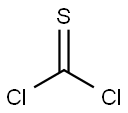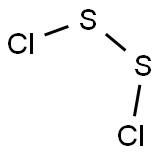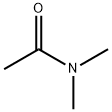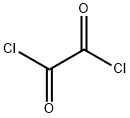Thiophosgene
Synonym(s):Thiocarbonyl chloride
- CAS NO.:463-71-8
- Empirical Formula: CCl2S
- Molecular Weight: 114.98
- MDL number: MFCD00004918
- EINECS: 207-341-6
- SAFETY DATA SHEET (SDS)
- Update Date: 2025-09-25 17:15:13

What is Thiophosgene?
Chemical properties
Reddish liquid. Decomposes in water and alcohol; soluble in ether.
Chemical properties
A clear dark red to reddish-yellow liquid. Sharp, choking odor.
The Uses of Thiophosgene
Thiophosgene is a photo degradation product of the agricultural fungicide Folpet (F402000).
Definition
ChEBI: Thiophosgene is a thiocarbonyl compound and a one-carbon compound.
General Description
A reddish liquid. Boiling point 73.5°C. A severe eye irritant. May severely burn skin on contact. Very toxic by inhalation and by skin absorption.
Air & Water Reactions
Reacts with water to evolve hydrogen chloride, carbon disulfide, and carbon dioxide. Reaction is slow unless the water is hot.
Reactivity Profile
Thiophosgene is incompatible with acids, diazo and azo compounds, halocarbons, isocyanates, aldehydes, alkali metals, nitrides, hydrides, and other strong reducing agents. Reactions with these materials generate heat and in many cases hydrogen gas. Liberates hydrogen sulfide upon reaction with acids.
Hazard
Toxic by ingestion and inhalation.
Health Hazard
Inhalation causes irritation of respiratory system and delayed pulmonary edema. Vapor irritates eyes. Liquid burns skin and eyes. Ingestion causes irritation of mouth and stomach.
Safety Profile
Poison by intravenous route. Moderately toxic by ingestion. A skin, mucous membrane, and severe eye irritant. When heated to decomposition it emits very toxic fumes of Cland SOx. See also PHOSGENE.
Potential Exposure
Primary irritant (w/o allergic reaction). There is not large-scale production of the chemical in the United States It is used to make other chemicals and in laboratory synthesis.
Shipping
UN2474 Thiophosgene, Hazard class: 6.1; Labels: 6.1-Poison Inhalation Hazard; Inhalation Hazard Zone B. PG 2. STN: 49 232 98.
Incompatibilities
Vapors may form explosive mixture with air. Incompatible with water and alcohols. Reacts with water releasing toxic hydrogen chloride, carbon disulfide, and carbon dioxide. Reaction is slow unless the water is hot. Decomposes above 200℃ to highly flammable carbon bisulfide and carbon tetrachloride. Corrodes metals, rubber and some plastics in the presence of moisture. Thiophosgene is incompatible with acids, diazo and azo compounds, halocarbons, isocyanates, aldehydes, alkali metals, nitrides, hydrides, and other strong reducing agents. Reactions with these materials generate heat and in many cases hydrogen gas. Liberates hydrogen sulfide upon reaction with acids
Waste Disposal
Dissolve or mix the material with a combustible solvent and burn in a chemical incinerator equipped with an afterburner and scrubber. All federal, state, and local environmental regulations must be observed.
Properties of Thiophosgene
| Melting point: | <25 °C |
| Boiling point: | 73 °C |
| Density | 1.508 |
| vapor density | 4 (vs air) |
| refractive index | n |
| Flash point: | 62 °C |
| storage temp. | 2-8°C |
| solubility | Chloroform |
| form | Liquid |
| color | A reddish liquid |
| Water Solubility | slow decomposition in cold, fast in hot water |
| BRN | 1633495 |
| Stability: | Stable. but reacts violently with water to produce toxic fumes. Incompatible with water, alcohols. Refrigerate at 2-8 C. |
| CAS DataBase Reference | 463-71-8(CAS DataBase Reference) |
| NIST Chemistry Reference | Carbonothioic dichloride(463-71-8) |
| EPA Substance Registry System | Thiophosgene (463-71-8) |
Safety information for Thiophosgene
| Signal word | Danger |
| Pictogram(s) |
 Corrosion Corrosives GHS05  Skull and Crossbones Acute Toxicity GHS06 |
| GHS Hazard Statements |
H302:Acute toxicity,oral H315:Skin corrosion/irritation H318:Serious eye damage/eye irritation H331:Acute toxicity,inhalation H335:Specific target organ toxicity, single exposure;Respiratory tract irritation |
| Precautionary Statement Codes |
P261:Avoid breathing dust/fume/gas/mist/vapours/spray. P280:Wear protective gloves/protective clothing/eye protection/face protection. P301+P312:IF SWALLOWED: call a POISON CENTER or doctor/physician IF you feel unwell. P302+P352:IF ON SKIN: wash with plenty of soap and water. P305+P351+P338:IF IN EYES: Rinse cautiously with water for several minutes. Remove contact lenses, if present and easy to do. Continuerinsing. |
Computed Descriptors for Thiophosgene
Thiophosgene manufacturer
New Products
4,4-Difluoropiperidine hydrochloride tert-butyl 9-methoxy-3-azaspiro[5.5]undecane-3-carboxylate Indole Methyl Resin N-Isopropylurea N,N-Dicyclohexylcarbodiimide(DCC) MELDRUMS ACID 5-METHYLISOXAZOLE-4-CARBOXYLIC ACID Magnessium Bis glycinate Zinc ascorbate 1-bromo-2-butyne 2-acetamidophenol 9(10H)-anthracenone Erythrosin B, 4-Piperidinopiperidine 2-((4-morpholinophenylamino) (methylthio) methylene) malononitrile 2,4-dihydroxybenzaldehyde 3-(4-morpholinophenylamino)-5-amino-1H-pyrazole-4-carbonitrile Methyl 2-methylquinoline-6-carboxylate 2,6-dichloro-4-nitropyridine 4-Bromo-2-chlorobenzonitrile 2-(benzylamino)acetic acid hydrochloride 4-(tert-Butoxycarbonylamino)but- 2-ynoic acid 3,4-dihydro-2H-benzo[b][1,4]dioxepine 1-Phenyl-1-cycloprppanecarboxylicacidRelated products of tetrahydrofuran








You may like
-
 Thiophosgene 463-71-8 98%View Details
Thiophosgene 463-71-8 98%View Details
463-71-8 -
 Thiophosgene CAS 463-71-8View Details
Thiophosgene CAS 463-71-8View Details
463-71-8 -
 Liquid Thiophosgene, For Industrial, Packaging Type: DrumView Details
Liquid Thiophosgene, For Industrial, Packaging Type: DrumView Details
463-71-8 -
 Liquid DichlorothiocarbonylView Details
Liquid DichlorothiocarbonylView Details
463-71-8 -
 3-(4-amino-1-oxoisoindolin-2-yl)-1-methylpiperidine-2,6-dione 98%View Details
3-(4-amino-1-oxoisoindolin-2-yl)-1-methylpiperidine-2,6-dione 98%View Details -
 20677-73-0 (2,2-diethoxyethyl)methylamine 98%View Details
20677-73-0 (2,2-diethoxyethyl)methylamine 98%View Details
20677-73-0 -
 3-(4-(hydroxyamino)-1-oxoisoindolin-2-yl)piperidine-2,6-dione 98%View Details
3-(4-(hydroxyamino)-1-oxoisoindolin-2-yl)piperidine-2,6-dione 98%View Details -
 57381-49-4 2-bromo-4-chlorobenzonitrile 98%View Details
57381-49-4 2-bromo-4-chlorobenzonitrile 98%View Details
57381-49-4
